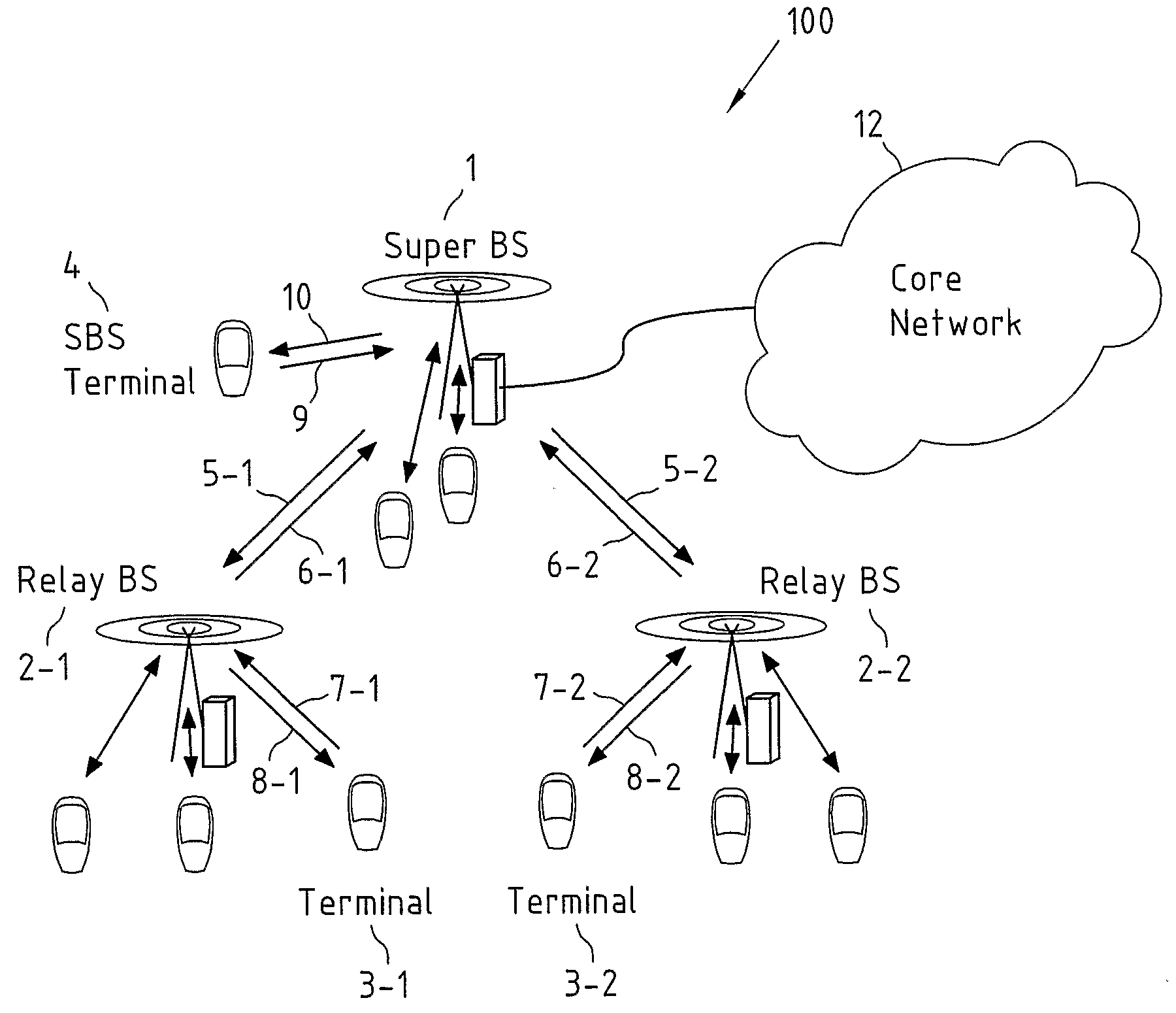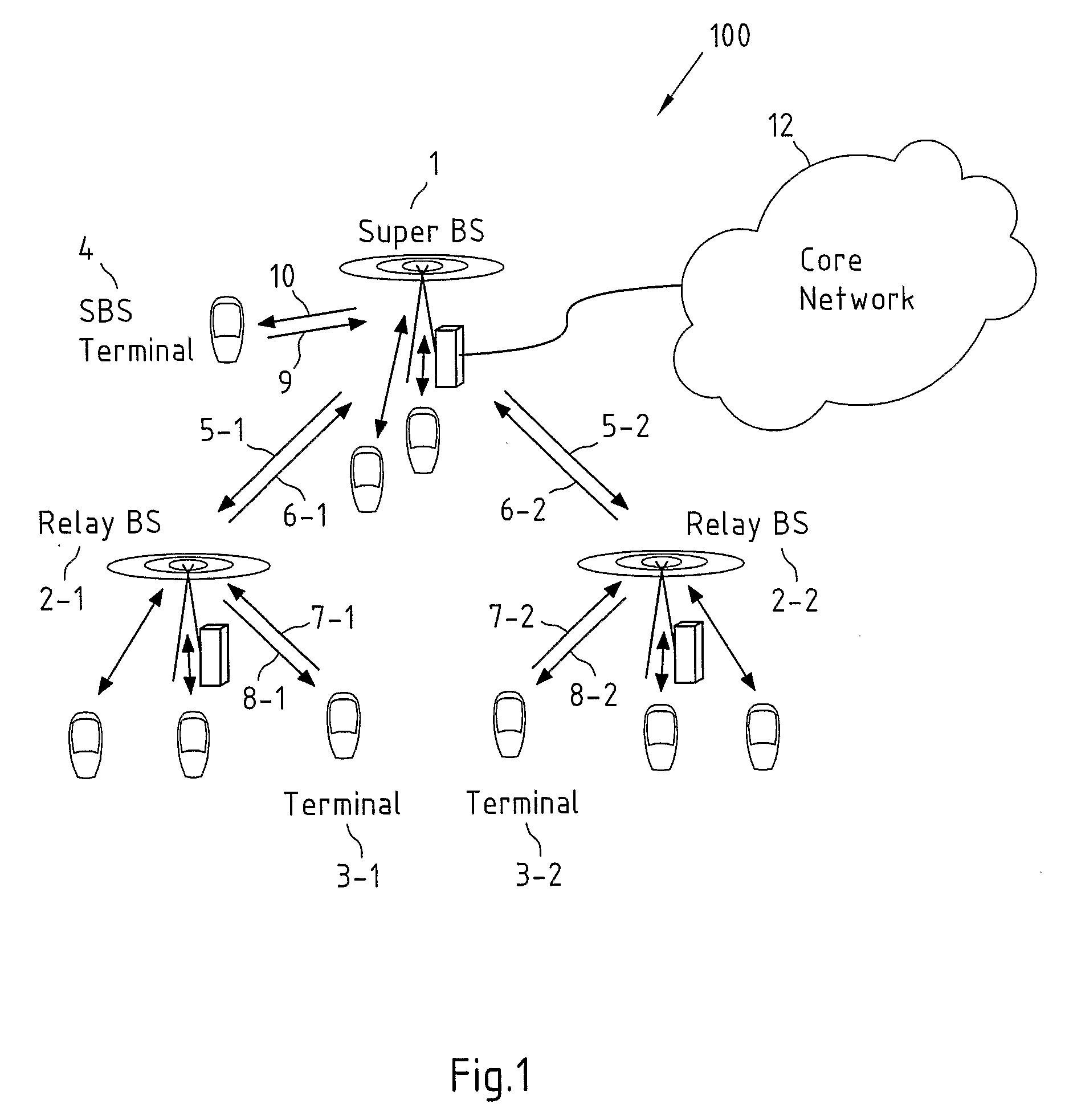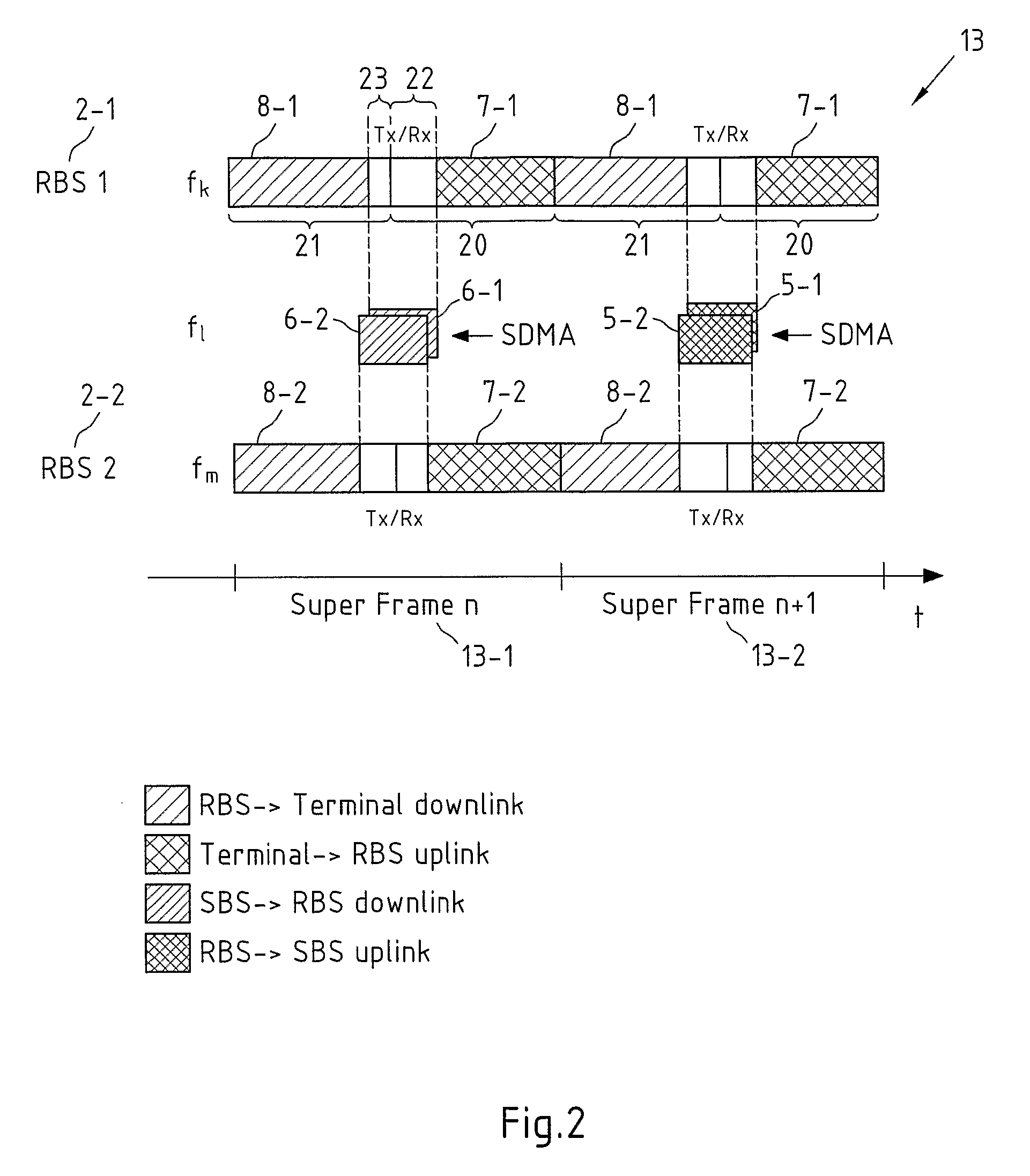Communication System Using Relay Base Stations with Asymmetric Data Links
a communication system and data link technology, applied in repeater circuits, line-transmission details, frequency-division multiplexes, etc., can solve the problems of increasing system deployment costs, increasing propagation attenuation, and reducing radio link distance, so as to increase the spectral efficiency of the communication system
- Summary
- Abstract
- Description
- Claims
- Application Information
AI Technical Summary
Benefits of technology
Problems solved by technology
Method used
Image
Examples
Embodiment Construction
[0080]FIG. 1 is a schematic representation of a communication system 100 with Relay Base Stations (RBSs) 2-1 and 2-2 according to the present invention. Up- and downlink data that is to be transmitted from Super Base Station SBS I to terminal 3-1, wherein terminal 3-1 is out of the coverage area of the SBS 1, is relayed via the RBS 2-1. On the downlink, thus downlink data is transmitted from said SBS 1 to said RBS 2-1 in a downlink RBS-SBS transmission 6-1, and then from RBS 2-1 to terminal 3-1 in a downlink RBS-terminal transmission 8-1. Similarly, on the uplink, terminal 3-1 first transmits to RBS 2-1 in an uplink RBS-terminal transmission 7-1, and then RBS 2-1 transmits to SES 1 in an uplink RBS-SBS transmission 6-1.
[0081]As exemplarily depicted in FIG. 1, the SES 1 may use several RBS 2-1, 2-2 to transmit data to several terminals 3-1, 3-2 that are actually out of range. Each RBS may be capable of relaying several data transmissions between the SBS 1 and several terminals. Also ...
PUM
 Login to View More
Login to View More Abstract
Description
Claims
Application Information
 Login to View More
Login to View More - R&D
- Intellectual Property
- Life Sciences
- Materials
- Tech Scout
- Unparalleled Data Quality
- Higher Quality Content
- 60% Fewer Hallucinations
Browse by: Latest US Patents, China's latest patents, Technical Efficacy Thesaurus, Application Domain, Technology Topic, Popular Technical Reports.
© 2025 PatSnap. All rights reserved.Legal|Privacy policy|Modern Slavery Act Transparency Statement|Sitemap|About US| Contact US: help@patsnap.com



